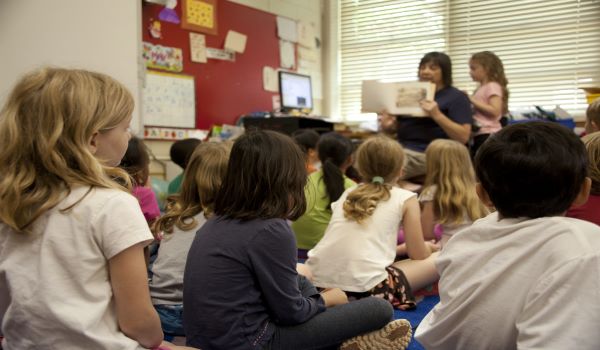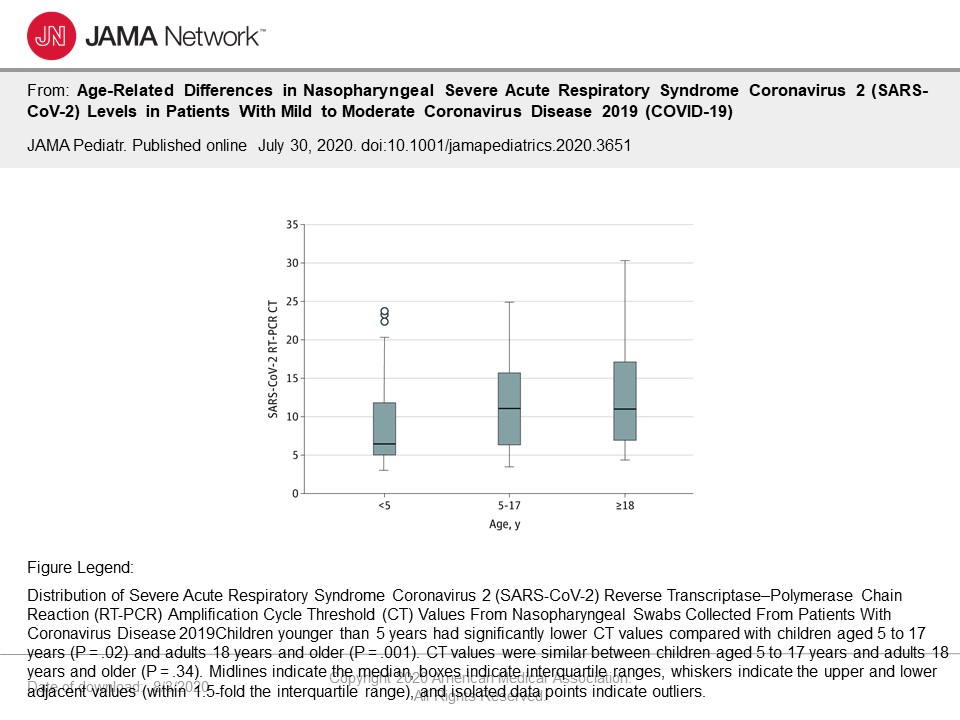Rabies Control in Kenya: Saving Lives One Vaccine at a Time
Throughout the world, thousands of lives are still lost every year due to rabies. In honor of World Rabies Awareness Day, let's encourage education...
3 min read
Abby Crimm : August 5, 2020 8:00:00 AM PDT

A recent study found that young children carry just as much or more SARS-CoV-2 viral RNA in their noses as older children or adults, challenging the assumption that kids don't spread COVID-19 as easily. What's in your nose?
An article recently published online on JAMA Pediatrics that describes a study done from March to April in Chicago found that children and teens tend to have as much viral nucleic acid in their nasal passages as adults. There has been some question as to the transferability of the virus from children to the general population because COVID-19 doesn’t seem to affect them as much as older populations.
"It's concerning the youngest individuals were the ones with the highest amount of virus. They are not always the ones who are washing their hands or wearing their masks."
- Dr. Taylor Heald-Sargent, lead researcher and pediatric infectious diseases specialist at Lurie Children's Hospital in Chicago.
The question in the back of every parent’s mind right now is whether their kids will physically be going to school in the fall. For some, it will determine if the parent gets a job or has to stay home and go without that income. For some, it means fear that the child will contract COVID-19 and potentially transmit it to an at-risk family member in the household.
Whichever direction you lean toward, it’s a complex issue with many competing factors that won’t end with the best of both worlds. School districts across the country face the challenge of deciding whether to do 100% virtual, 100% in-person, or a hybrid structure. Then there’s what to do with at-risk teachers.
In the meantime, the medical field seeks to find answers about the health risks involving kids and COVID-19 so leaders can make decisions based on scientific evidence.
When it comes to COVID-19 and children, the data we have is sparse. For other respiratory and gastrointestinal illnesses, children can and do spread it to the general population, but school closings and other early pandemic responses made it practically impossible to collect data about COVID-19 in child populations at a large scale.
It became clear that for some reason, children present mild symptoms (if any) compared to adults in general. The death rate for children is incredibly low, with fewer children dying of COVID-19 than children typically do of the flu each year. Just 7% of U.S. COVID-19 cases, and less than 0.1% of related deaths, have occurred in people under the age of 18.
Previous studies about children and COVID-19 have led people to believe that the transfer potential for children is low, making the outbreak risk of bringing kids back to school low as well.
It’s with all this in mind that both the CDC and the American Pediatric Association (APA) last week recommended that schools bring back the children for in-person instruction. Along with weighing the reasons for in-person schooling against the understandable concern for health, the CDC states, “the best available evidence indicates that COVID-19 poses relatively low risks to school-aged children.”
The bottom line is that we still don’t know what the consequences of in-person schooling would be. It’ll be a situation in which school systems and parents (society as a whole, actually) will have to adapt as we learn more.
"Some of the arguments that have been made in regard to schools and day cares opening is that perhaps children are unable to make the virus as efficiently in their nose, and that's why they're not as sick," Heald-Sargent said. "This data would argue against that. They are able to sustain replication, the same amount as older individuals, if not more."

This recent article serves to question the general assumptions we make about children and COVID-19 and to demonstrate how little we know about how kids transfer the virus.
Dr. Amesh Adalja, a senior scholar at the Johns Hopkins Center for Health Security in Baltimore, suggests that using this study to conjecture at children’s virus transferability is insufficient:
"It's one thing to find virus in the nasal passages of a child versus finding epidemiological evidence of children passing it on to other people.That's the key thing—we're still not seeing outbreaks being driven by children to the extent they are driven by older individuals, and that's despite the fact that they have the virus in their nose."
-Dr. Amesh Adalja
Why kids aren’t shown to be as infectious as adults when it comes to COVID-19 is still a mystery. A happy mystery at that—how great is it that our little ones’ immune systems are somehow equipped to handle this virus!
We shouldn’t be too quick to jump to a completely virtual curriculum when the risk seems to be so low and the consequences of keeping them home could hurt families significantly in the long run. However, that doesn’t mean that we should be thoughtless about gathering tens of germy kids into crowded classrooms.
Understanding the costs and rewards of each scenario is important as we approach the start of school in the fall. Studies like this one attempting to describe and prove those costs are essential to basing decisions on scientific evidence rather than political leanings or mere feeling.
Learn More!
Subscribe to our YouTube channel or check out our Resource Library full of great podcasts, videos, and digital downloads!
Disclaimer
Content may contain advertising and sponsorships. Advertisers and sponsors are responsible for ensuring that material submitted for inclusion is accurate and complies with applicable laws. We are not responsible for the illegality of any error, inaccuracy, or problem in the advertiser’s or sponsor’s materials.
Advertising material and/or opinions are not a reflection on Viticus Group.

Throughout the world, thousands of lives are still lost every year due to rabies. In honor of World Rabies Awareness Day, let's encourage education...

There are many different formats available in the world of continuing education. What kind of continuing education program brings the most benefit to...

During times of high stress and remote working, the emotional intelligence and creativity of people in healthcare leadership roles have never been...